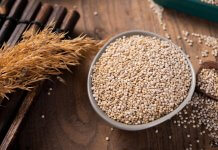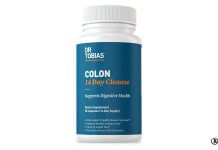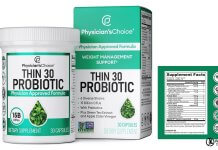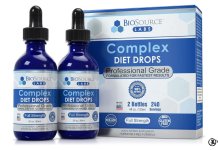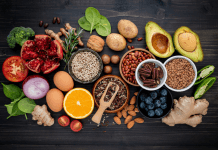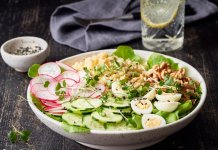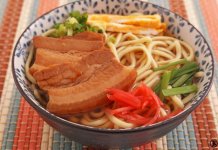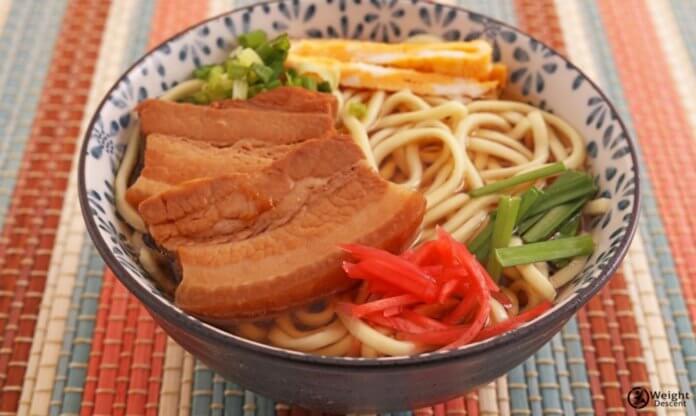I get commissions for purchases made through links on the site. As an Amazon and Clickbank Associate I earn from qualifying purchases. Learn more.
Okinawa diet is a traditional diet of Japanese because they live longer with a healthy diet. Japanese are not suffering from health problems because they eat healthy, Okinawa healthy diet. Okinawa diet is low in calories and fats but high in carbohydrates. In recent years, the Japanese modified their diet to low in calories, balanced carbs, and high protein and fat. Healthy fat and protein are essential nutrients of your body and feel you fuller for longer.
How the Japanese follow the Okinawa diet? What foods do they eat? What are the health benefits of the Okinawa diet? We will discuss this in detail.
Table of Contents
About Okinawa Diet
Okinawan lifestyle is mindful eating and includes daily self-care. Exercise is mandatory to live a long and healthy life. The Okinawa diet plan includes vegetables and legumes, grain, some noodles, boiled rice, and fish for protein.
Okinawa’s daily diet includes vegetables, green and yellow vegetables. Vegetable roots such as sweet potatoes and yellow pumpkin are full of carotenoids that act as antioxidant and reduce inflammation.
Yellow and purple potatoes are the source of carbs and eat rice somedays not to get bored by the same eating. Mushrooms, seaweeds, fishes are a source of protein to fulfill essential body nutrients. Now we will discuss what food you should eat at the Okinawa diet and what to avoid for a healthy life.
“Okinawa diet improves the body functions and saves you from may chronic diseases like; heart attack, cancer, and diabetes.”
Okinawa Diet Food List
Here’s a list of foods typically included in the Okinawa Diet, known for its focus on nutrient-rich, low-calorie foods that contribute to longevity and health. This diet is inspired by the traditional eating habits of the Okinawa islands in Japan.
- Sweet Potatoes: The primary carbohydrate in the Okinawa diet, particularly the purple variety known as ‘Okinawan sweet potato.’
- Soy Foods: Including tofu, miso, and natto, soy foods are a staple protein source in the Okinawa diet.
- Seaweed: Various types, such as kombu and wakame, are used frequently for their rich mineral content.
- Green and Yellow Vegetables: Bitter melon (goya), Okinawa spinach, and other leafy greens are common.
- Whole Grains: Although not as predominant as sweet potatoes, whole grains like brown rice and barley are often included.
- Fish: Consumed in moderation, fish provides essential omega-3 fatty acids.
- Fruits: Papaya, mango, and pineapple are popular, alongside more temperate fruits like oranges and bananas.
- Mushrooms: Shiitake and other varieties are used both for flavor and health benefits.
- Herbs and Spices: Turmeric and mugwort are notable for their anti-inflammatory properties.
- Tea: Jasmine tea and green tea are commonly consumed for their antioxidants.
This list emphasizes the low-calorie, high-nutrient approach of the Okinawa diet, focusing on whole, plant-based foods with moderate amounts of fish and soy-based proteins.
3 Okinawa Diet Recipes for Weight Loss
Here are three popular Okinawa diet recipes that are not only delicious but also geared towards weight loss due to their nutrient-rich, low-calorie ingredients.
1. Okinawan Sweet Potato and Greens Stir-Fry
Ingredients:
- 2 cups diced Okinawan sweet potatoes (purple sweet potatoes)
- 2 cups chopped Okinawa spinach or kale
- 1 tablespoon sesame oil
- 2 cloves garlic, minced
- 1 teaspoon grated ginger
- 1 tablespoon low-sodium soy sauce
- 1 teaspoon sesame seeds
Instructions:
- Steam or boil the sweet potatoes until just tender, about 8-10 minutes.
- Heat the sesame oil in a large pan over medium heat. Add the minced garlic and grated ginger, sautéing until fragrant.
- Add the steamed sweet potatoes and chopped greens. Stir-fry until the greens are wilted.
- Drizzle with soy sauce and sprinkle with sesame seeds before serving.
2. Miso Soup with Tofu and Seaweed
Ingredients:
- 4 cups water
- 2 tablespoons miso paste
- 1 cup diced tofu
- 1/2 cup chopped seaweed (wakame or kombu)
- 1/4 cup sliced green onions
- 1 tablespoon dried bonito flakes (optional)
Instructions:
- Bring water to a boil in a pot. Reduce to a simmer.
- Add the seaweed and tofu, simmer for about 5 minutes.
- Place miso paste in a bowl. Add a little hot water and whisk until smooth.
- Turn off the heat, add the miso mixture to the pot, and stir well.
- Garnish with green onions and bonito flakes before serving.
3. Bitter Melon (Goya) Champuru
Ingredients:
- 1 medium bitter melon (goya), thinly sliced
- 1 block firm tofu, drained and cubed
- 2 eggs, beaten
- 1 tablespoon vegetable oil
- 1 teaspoon turmeric
- Soy sauce to taste
Instructions:
- Soak sliced bitter melon in salted water for about 10 minutes, then drain.
- Heat oil in a pan. Add the bitter melon and turmeric, stir-frying until it starts to soften.
- Add tofu and continue to stir-fry until lightly golden.
- Pour the beaten eggs over the mixture. Stir gently until the eggs are fully cooked.
- Season with soy sauce to taste and serve.
Food to Avoid on Okinawa Diet
- Processed Foods: This includes packaged snacks, instant noodles, canned soups, and ready-to-eat meals that are high in preservatives and artificial ingredients.
- Refined Carbohydrates: White bread, white rice, pastries, and other products made from refined flour have a high glycemic index and are low in nutrients.
- Sugary Beverages: Sodas, sweetened teas, and sugary juices should be avoided due to their high sugar content and lack of nutritional value.
- Excessive Meat Consumption: Particularly red and processed meats like bacon, sausage, and ham, which are high in saturated fats and calories.
- Full-Fat Dairy Products: Items like whole milk, cream, and full-fat cheese are limited due to their high saturated fat content.
- Deep-Fried Foods: Foods fried in oil at high temperatures are high in calories and often contain unhealthy fats.
- High-Salt Foods: Excessive salt intake is discouraged, so foods like salty snacks, heavily salted condiments, and pickles are minimized.
- Artificial Sweeteners and Additives: These are often found in diet foods and beverages and are avoided in favor of natural flavors and sweeteners.
- Alcohol: While moderate consumption of certain types of alcohol like awamori (a traditional Okinawan spirit) may be part of the culture, excessive drinking is not recommended.
- Fast Food and Junk Food: These are high in calories, unhealthy fats, and sodium, offering little nutritional value.
Okinawa Diet Benefits
Here is a list of benefits that make this diet a popular choice for healthy living:
- Promotes Longevity: The diet is linked to the remarkable longevity of Okinawans, who have one of the highest life expectancies in the world.
- Rich in Nutrients: It focuses on nutrient-dense foods like vegetables, fruits, and fish, providing a wide range of vitamins, minerals, and antioxidants.
- Low in Calories: The diet emphasizes low-calorie, high-volume foods, which can help in weight management and reduce obesity risk.
- Heart Health: The low intake of saturated fats and high consumption of omega-3 fatty acids from fish contribute to better heart health.
- Reduced Risk of Chronic Diseases: Its focus on whole, unprocessed foods can lower the risk of diseases like diabetes, cancer, and heart disease.
- Anti-Inflammatory Properties: Foods in the Okinawa diet, such as turmeric and leafy greens, have natural anti-inflammatory benefits.
- Improved Brain Health: The diet’s rich antioxidants and healthy fats are beneficial for maintaining cognitive function and may lower the risk of neurodegenerative diseases.
- Supports Digestive Health: High fiber content from fruits, vegetables, and whole grains aids in digestion and gut health.
- Weight Loss and Management: The high fiber content and low-calorie nature of the diet support weight loss and healthy weight management.
- Balanced Blood Sugar Levels: Low glycemic index foods help in maintaining steady blood sugar levels, beneficial for diabetes prevention and management.
Conclusion
Growing old is the sad reality of life. If you become paralyze, then your life becomes tougher. Staying healthy throughout life is the wish of every person. Japanese who rely on Okinawa diet are doing their work at the age of hundred. Okinawa diet emphasizes healthy and mindful lifestyle eating. Exercise is essential in once life for healthy living. If you do not exercise daily, your bones start aching, and if you do not move them for many days, it might be possible to paralyze.
If you want long healthy life and want to boost your health till last breath, then the Okinawa diet is worth trying for you. Healthy and long life is a success.






